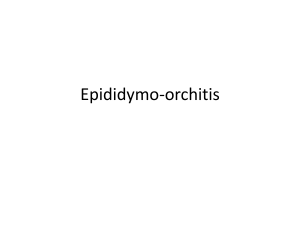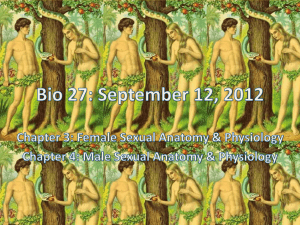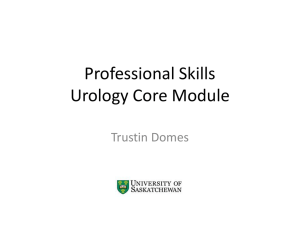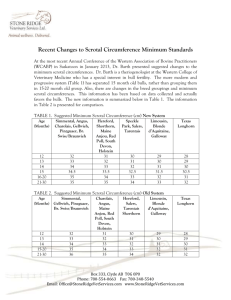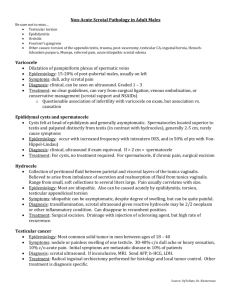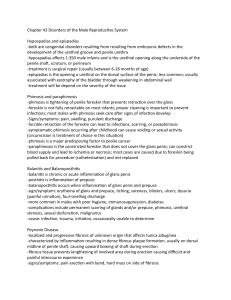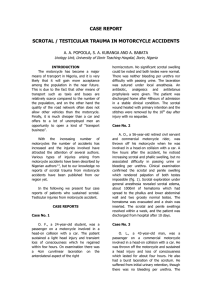Harvard-MIT Division of Health Sciences and Technology HST.071: Human Reproductive Biology
advertisement
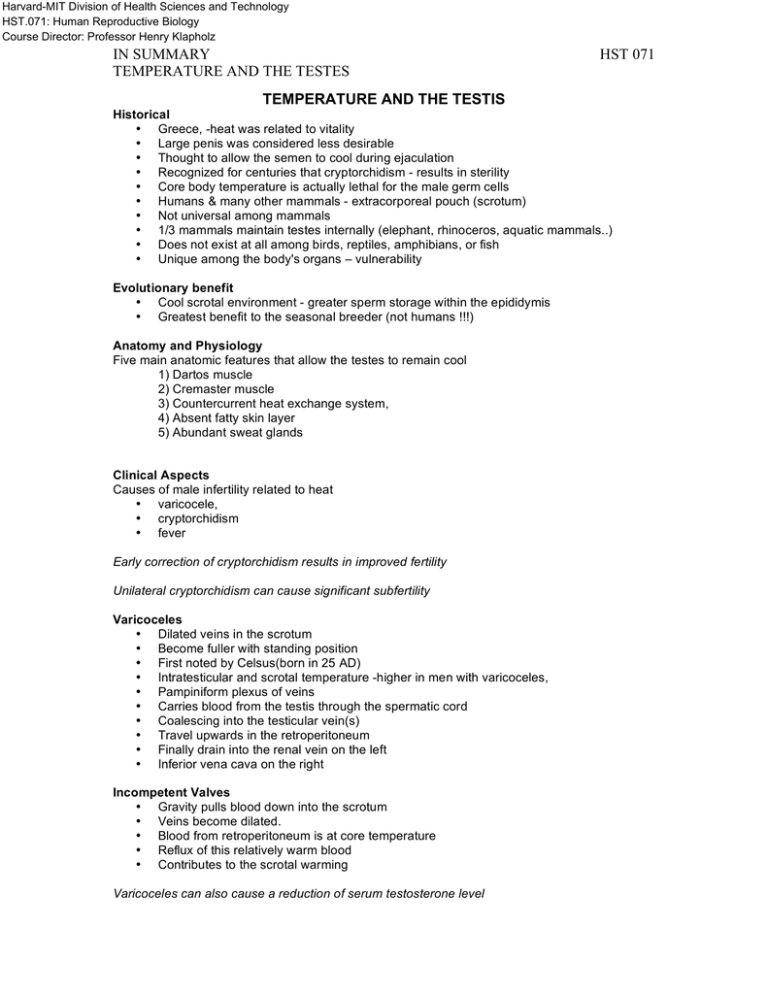
Harvard-MIT Division of Health Sciences and Technology HST.071: Human Reproductive Biology Course Director: Professor Henry Klapholz IN SUMMARY TEMPERATURE AND THE TESTES HST 071 TEMPERATURE AND THE TESTIS Historical • Greece, -heat was related to vitality • Large penis was considered less desirable • Thought to allow the semen to cool during ejaculation • Recognized for centuries that cryptorchidism - results in sterility • Core body temperature is actually lethal for the male germ cells • Humans & many other mammals - extracorporeal pouch (scrotum) • Not universal among mammals • 1/3 mammals maintain testes internally (elephant, rhinoceros, aquatic mammals..) • Does not exist at all among birds, reptiles, amphibians, or fish • Unique among the body's organs – vulnerability Evolutionary benefit • Cool scrotal environment - greater sperm storage within the epididymis • Greatest benefit to the seasonal breeder (not humans !!!) Anatomy and Physiology Five main anatomic features that allow the testes to remain cool 1) Dartos muscle 2) Cremaster muscle 3) Countercurrent heat exchange system, 4) Absent fatty skin layer 5) Abundant sweat glands Clinical Aspects Causes of male infertility related to heat • varicocele, • cryptorchidism • fever Early correction of cryptorchidism results in improved fertility Unilateral cryptorchidism can cause significant subfertility Varicoceles • Dilated veins in the scrotum • Become fuller with standing position • First noted by Celsus(born in 25 AD) • Intratesticular and scrotal temperature -higher in men with varicoceles, • Pampiniform plexus of veins • Carries blood from the testis through the spermatic cord • Coalescing into the testicular vein(s) • Travel upwards in the retroperitoneum • Finally drain into the renal vein on the left • Inferior vena cava on the right Incompetent Valves • Gravity pulls blood down into the scrotum • Veins become dilated. • Blood from retroperitoneum is at core temperature • Reflux of this relatively warm blood • Contributes to the scrotal warming Varicoceles can also cause a reduction of serum testosterone level IN SUMMARY TEMPERATURE AND THE TESTES HST 071 Basic science • When stem spermatogonia have been lost - no capability for • spermatogenesis to recover • First cellular manifestations of heat exposure - condensation of nuclear components (pyknosis), • P53 highly expressed in testes • Apoptosis form of cell death in biologic systems - loss of germ cells in response to heat • Longest stage (pachytene) – crossover and DNA exchange, ability to repair breaks • Time-temperature threshold Heat and Male Contraception Insulating the underwear of male volunteers • Significant drop in sperm concentration and motility • Change in scrotal temperature of only 1°C • Unreliable form of contraception Controversy No temperature differences were noted between men wearing tight or loose underwear in one study while sperm count twice as high in another FUNDAMENTAL QUESTIONS 1. Discuss the adaptive need for extracorporeal testes. Do all mammals have these? 2. What happens to cells exposed to increased temperature? 3. What is a varicocele? Discuss the aberration in blood flow that occurs. 4. Does surgical correction of a varicocele help fertility in males? 5. Do boxer shorts help fertility? What is the evidence for this? .
